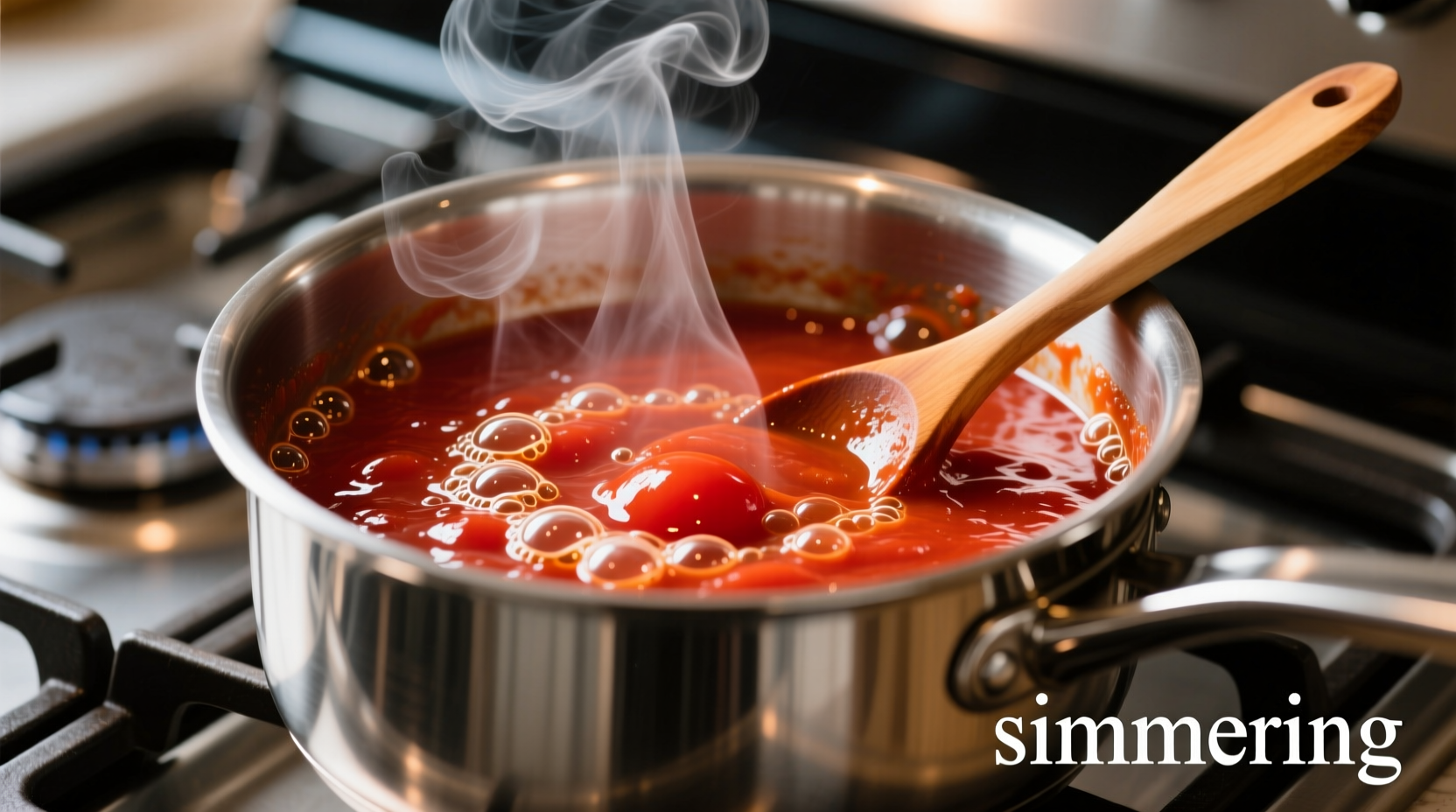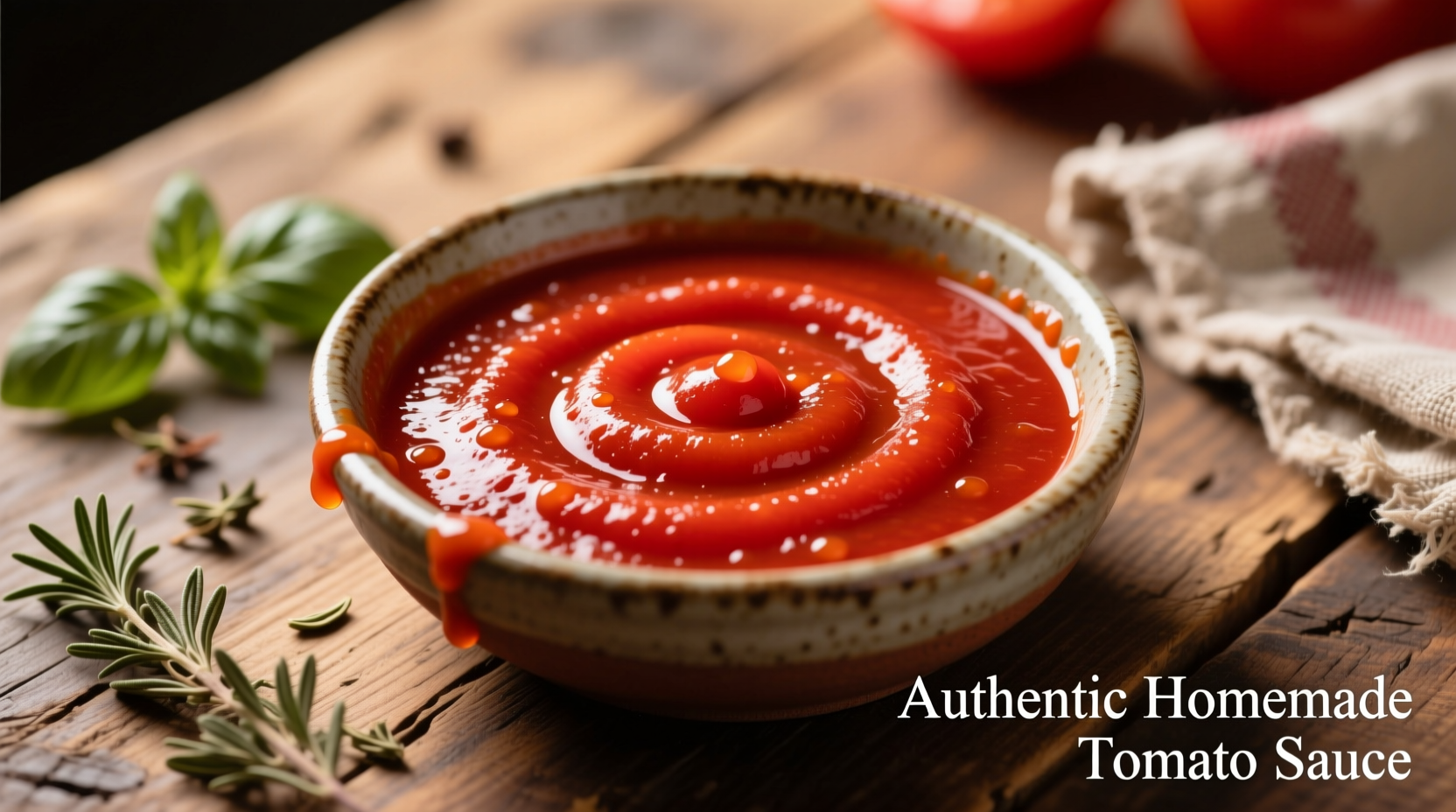Tomato sauce (often misspelled as "tomato sause") is a versatile cooking staple made from cooked tomatoes with added seasonings. The correct spelling is "sauce," not "sause." Understanding the differences between tomato sauce varieties prevents recipe failures and elevates your cooking results significantly.
What Exactly Is Tomato Sauce?
Tomato sauce refers to a liquid preparation made from tomatoes that have been cooked down, typically with added ingredients like onions, garlic, herbs, and spices. Unlike tomato paste, which is highly concentrated, tomato sauce has a thinner consistency suitable for pouring. The USDA defines commercial tomato sauce as containing 8-24% tomato solids, distinguishing it from thicker tomato paste (24-30% solids) and thinner tomato juice (5-8% solids).

Tomato Sauce Varieties Explained
Many home cooks struggle with the confusing array of tomato products available. Understanding these differences saves time, money, and prevents ruined recipes:
| Product | Consistency | Tomato Solids | Best Uses |
|---|---|---|---|
| Tomato Sauce | Thin, pourable | 8-24% | Pasta dishes, soups, stews |
| Tomato Paste | Thick, concentrated | 24-30% | Flavor base, thickening sauces |
| Marinara Sauce | Medium thickness | 12-18% | Pasta, pizza, dipping |
| Tomato Puree | Smooth, medium | 8-12% | Casseroles, braises |
When to Use Each Tomato Product
Choosing the right tomato product makes or breaks your dish. Professional chefs follow these guidelines:
Tomato Sauce Applications
Use standard tomato sauce as the foundation for most Italian-American dishes. It works perfectly in baked ziti, lasagna, and as a base for meat sauces. For "what tomato sauce to use for spaghetti," choose a basic tomato sauce rather than marinara if you're planning to simmer it with additional ingredients for 30+ minutes.
Tomato Paste Secrets
Professional kitchens always "cook out" tomato paste before adding liquids - sautéing it 2-3 minutes until it darkens slightly. This "tomato paste cooking technique" removes raw flavor and deepens umami. Never substitute tomato paste 1:1 with sauce; you'll need to reduce liquid elsewhere in your recipe.
Marinara vs. Tomato Sauce
"Is marinara the same as tomato sauce?" No. Marinara contains garlic, herbs, and sometimes red pepper flakes added during cooking, while basic tomato sauce is simpler. Use marinara for quick pasta dishes when you don't have time to build flavors from scratch.
Tomato Sauce Evolution Timeline
The journey of tomato sauce from novelty to kitchen staple reveals why modern varieties exist:
- 1540s: Tomatoes introduced to Europe from the Americas; initially considered ornamental
- 1700s: First recorded tomato sauce recipes appear in Italian cookbooks
- 1800s: Commercial canning makes tomato products widely available
- 1920s: Standardized classifications for tomato products established in the US
- 1950s: Italian immigration popularizes marinara and other regional sauces in America
- Present: Specialty tomato sauces (arrabbiata, pomodoro) available globally
Practical Tomato Sauce Guidance
Follow these evidence-based recommendations from culinary professionals:
When Substitutions Work (and When They Don't)
"Can I use tomato sauce instead of tomato paste?" Yes, but with critical adjustments. For "tomato sauce substitute for paste," use 3 parts sauce reduced to 1 part by simmering. Never substitute paste for sauce 1:1 in "tomato sauce for chicken parmesan" - the dish will become too thick and concentrated.
Storage Best Practices
Opened tomato sauce keeps 5-7 days refrigerated. For longer storage, freeze in ice cube trays then transfer to bags. "How long does tomato sauce last in fridge" after opening? No more than one week for best quality and safety, according to FDA guidelines.
Avoid These Common Mistakes
"Why does my tomato sauce taste bitter?" Common causes include:
- Using low-quality canned tomatoes
- Not balancing acidity with a pinch of sugar
- Over-reducing the sauce
- Cooking in reactive aluminum pans
For "how to fix bitter tomato sauce," add 1/4 teaspoon baking soda or a small carrot while simmering - both neutralize acidity without adding sweetness.
Choosing Quality Tomato Sauce
When selecting "best tomato sauce for pasta," look for these markers of quality:
- Ingredients list with minimal additives (tomatoes, salt, maybe herbs)
- Higher tomato solid percentage (check nutrition label)
- Acidity level around 4.0-4.3 pH for balanced flavor
- No artificial preservatives or thickeners
"Is canned tomato sauce bad for you?" Quality canned tomato sauce provides lycopene, an antioxidant more bioavailable after cooking. Choose BPA-free cans and avoid brands with excessive sodium.
FAQs About Tomato Sauce
What's the difference between tomato sauce and tomato puree?
Tomato puree has slightly less tomato solids (8-12%) than tomato sauce (8-24%). Puree is smoother with no added seasonings, while sauce often contains herbs and spices. Puree works better in dishes requiring neutral tomato flavor.
Can I make tomato sauce from tomato paste?
Yes, combine 1 part tomato paste with 1-2 parts water. For "tomato paste to sauce ratio," use 1:1 for medium thickness or 1:2 for thinner sauce. Simmer 10 minutes with garlic and herbs for best results.
Why does my homemade tomato sauce separate?
Separation occurs when oil-based ingredients (like olive oil) and water-based tomato liquids don't emulsify. To prevent this, add fats gradually while stirring constantly, or use an immersion blender to create a stable emulsion.
How do I thicken tomato sauce without altering flavor?
Simmer uncovered to reduce liquid naturally. For quicker thickening without flavor changes, mix 1 tablespoon cornstarch with 2 tablespoons cold water, then stir into simmering sauce. Avoid flour which can create a pasty texture.











 浙公网安备
33010002000092号
浙公网安备
33010002000092号 浙B2-20120091-4
浙B2-20120091-4